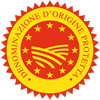Description
The Valle d’Aosta PDO or Vallée d’Aoste PDO is reserved for the following types of wine: White, Red, Rosé, Passito and Novello; Spumante and Late Harvest (only with specification of grape variety). The Designation also incorporates numerous grape variety and geographical specifications.
Production Area
The production area of Valle d’Aosta PDO or Vallée d’Aoste PDO is within the territory of the Dora Baltea Valley and is sub-divided into three geographical areas: Bassa Valle (including the areas of Donnas and Arnad-Montjovet), Centro Valle (Chambave, Nus, Torrette) and Alta Valle (Blanc de Morgex et de La Salle), in the Province of Aosta, in the Valle d’Aosta region.
Description of product typologies
Valle d’Aosta PDO or Vallée d’Aoste PDO Bianco or Blanc is straw-yellow with greenish to golden reflections; the nose is floral and fruity; it is harmonious on the palate, with decisive minerality. Valle d’Aosta PDO or Vallée d’Aoste PDO Rosso or Rouge is ruby red, which can tend towards intense pink depending on the type of vinification; the nose reveals fragrances of fresh red fruit; it is lively on the palate, with fine tannins and discreet persistence. Valle d’Aosta PDO or Vallée d’Aoste PDO Rosato or Rosé ranges from onion-skin pink to soft pink; the nose is delicate, offering fragrances of small red fruit and petals; it is fresh, balanced and pleasant on the palate. Valle d’Aosta PDO or Vallée d’Aoste PDO Passito or Flétri ranges from golden to coppery; the aromas are persistent yet elegant, with aromatic nuances and sensations of small pastries; it is warm and embracing on the palate, with sensations of candied fruit and aromatic herbs. Valle d’Aosta PDO or Vallée d’Aoste PDO Novello or Nouveau is ruby red with crimson reflections; the nose displays fragrances of red fruit; it is balanced and fresh on the palate. The organoleptic properties of Valle d’Aosta PDO or Vallée d’Aoste PDO wines with grape variety or geographical specifications are typical of the grapes and terroir of origin. Valle d’Aosta PDO or Vallée d’Aoste PDO Passito or Flétri wines must be produced made with selected grapes that have been dried after the harvest in suitable environments, including those with thermal hydro-conditioning and/or forced ventilation; the wine cannot be released for consumption before November 1st of the year following that of the grape harvest. The Valle d’Aosta PDO or Vallée d’Aoste PDO followed by the Bianco or Blanc, Rosso or Rouge, Rosato or Rosé colour specifications or by the specification Passito or Flétri, can be used by the sub-areas which have the right to designate white, red, rosé or Passito wines made from grapes possessing the minimum characteristics set out in the product specification.
Geographical and sub-area specifications
The Valle d’Aosta PDO or Vallée d’Aoste PDO can be accompanied by seven geographical sub-designations. Valle d’Aosta PDO or Vallée d’Aoste PDO Donnas, reserved for Red wine (incl. Superiore) obtained from grapes belonging to the Nebbiolo grape variety, min. 85%, pure or with the addition of similarly-coloured grapes originating from other grape varieties suitable for cultivation in the concerned area, max. 15%. Valle d’Aosta PDO or Vallée d’Aoste PDO Donnas wines must be matured for a mandatory period of 24 months, which is extended to 30 months for Superiore or Supérieur wines. The maturing period commences December 1st of the year in which the grapes were produced. Valle d’Aosta PDO or Vallée d’Aoste PDO Arnad-Montjovet, reserved for Red wine (incl. Superiore) obtained from grapes belonging to the Nebbiolo grape variety, min. 70%, pure or with the addition of similarly-coloured grapes originating from other grape varieties suitable for cultivation in the concerned area, max. 30%. Valle d’Aosta PDO or Vallée d’Aoste PDO Arnad-Montjovet Superiore or Supérieur wines must be matured for a mandatory period of 12 months, commencing from when the grapes are harvested. Valle d’Aosta PDO or Vallée d’Aoste PDO Chambave, reserved for Red wine (incl. Superiore) and Passito (or Flétri). The red wine is obtained from grapes belonging to the Petit Rouge grape variety, min. 70%, pure or with the addition of similarly-coloured grapes originating from other grape varieties suitable for cultivation in the concerned area, max. 30%. Valle d’Aosta or Vallée d’Aoste Chambave Muscat PDO, reserved for White Passito (or Flétri) wine obtained from grapes belonging to the Moscato Bianco grape variety suitable for cultivation in the concerned area. Valle d’Aosta PDO or Vallée d’Aoste PDO Chambave Superiore or Supérieur wine must be matured for a mandatory period of 8 months, commencing from the date on which the grapes were produced. Valle d’Aosta PDO or Vallée d’Aoste PDO Nus, reserved for Red wine (incl. Superiore) and Passito (or Flétri). The red wine is obtained from grapes belonging to the Petit Rouge and Vien de Nus grape varieties, min. 70% , of which at least 40% must be Vien de Nus, pure or with the addition of similarly-coloured grapes originating from other grape varieties suitable for cultivation in the concerned area, max. 30%. Valle d’Aosta PDO or Vallée d’Aoste Nus Malvoisie PDO, reserved for White Passito (or Flétri) wines obtained from grapes belonging to the Pinot Grigio grape variety. Valle d’Aosta PDO or Vallée d’Aoste PDO Nus Superiore or Supérieur wine must be matured for a mandatory period of 8 months, commencing from the date of the grape harvest. Valle d’Aosta PDO or Vallée d’Aoste PDO Torrette, reserved for Red wine (incl. Superiore) obtained from grapes belonging to the Petit Rouge grape variety, min. 70%, pure or with the addition of similarly-coloured grapes originating from other grape varieties suitable for cultivation in the concerned area, max. 30%. Valle d’Aosta PDO or Vallée d’Aoste PDO Torrette Superiore or Supérieur wines must be matured for a mandatory period of 8 months, commencing from the date on which the grapes were produced. Valle d’Aosta PDO or Vallée d’Aoste PDO Enfer d’Arvier, reserved for Red wine (incl. Superiore) obtained from grapes belonging to the Petit Rouge grape variety, min. 85%, pure or with the addition of similarly-coloured grapes originating from other grape varieties suitable for cultivation in the concerned area, max. 15%. Valle d’Aosta PDO or Vallée d’Aoste PDO Enfer d’Arvier Superiore or Supérieur wines must be matured for a mandatory period of 8 months, commencing from the grape harvest. Valle d’Aosta PDO or Vallée d’Aoste PDO Blanc de Morgex et de La Salle, reserved for White, Spumante and Vendemmia Tardiva or Vendange Tardive wines obtained from grapes belonging to the Prié Blanc variety, suitable for cultivation in the concerned area. Valle d’Aosta PDO or Vallée d’Aoste PDO Blanc de Morgex et de La Salle Spumante or Mousseux wines are obtained exclusively through natural secondary fermentation in the bottle, remaining on the lees for at least 9 months; the production process must last for at least 12 months. These wines can only be produced on the condition that the product is sold in the following types: Extra-brut, Brut, Demi-sec and Pas dosé, each of which must indicate the sugar content.
Grape variety specifications
The Valle d’Aosta PDO or Vallée d’Aoste PDO may display the following grape variety specifications. From white grape varieties: min. 85% Müller Thurgau (incl. Late Harvest), Pinot Grigio or Pinot Gris (incl. Late Harvest), Pinot Bianco or Pinot Blanc, Chardonnay (incl. Late Harvest), Petite Arvine, Moscato Bianco or Muscat Petit Grain, Traminer Aromatico or Gewürztraminer (incl. Passito or Flétri), pure or with the addition of similarly-coloured grapes originating from other grape varieties suitable for cultivation in the concerned area, max. 15%. From red grape varieties: min. 85% Nebbiolo (incl. Rosé), Gamay, Pinot Nero or Pinot Noir (included those vinified in white), Mayolet, Gamaret, Vuillermin, Syrah, Merlot, Petit Rouge, Prëmetta, Fumin, Cornalin, pure or with the addition of similarly-coloured grapes originating from other grape varieties suitable for cultivation in the concerned area, max. 15%. The characteristics of the colour, fragrances and flavour of each specification are those typical of the grape variety and terroir of origin. The Valle d’Aosta or Vallée d’Aoste PDO followed by the specification Vendemmia Tardiva or Vendange Tardive is reserved for wines obtained from grapes that have been partially dried naturally on the vines. For all types of Vendemmia Tardiva or Vendange Tardive wine, there is a mandatory maturing period of 6 months, commencing December 1st of the year in which the grapes were produced.
Additional specifications
The Valle d’Aosta PDO or Vallée d’Aoste PDO designation can be followed by the specification Vigna or Vigne or “Clos” or “Coteau” (Vineyard) with the relative toponym. Geographical specifications, grape variety specifications, wine colour and the type of vinification must be indicated on the label together with the name of the designation. The year in which the grapes were produced must always be indicated on the labels of Valle d’Aosta PDO or Vallée d’Aoste PDO wines, with the exception of Spumante wines. In the designation and presentation of Valle d’Aosta PDO Vendemmia Tardiva or Vallée d’Aoste PDO Vendange Tardive wines, it is mandatory to indicate the geographical specification of where the wines originate. For Valle d’Aosta PDO or Vallée d’Aoste PDO wines with the specifications Chambave Moscato Muscat, Nus Malvoisie, Moscato Bianco or Muscat Petit Grain, Traminer Aromatico or Gewürztraminer obtained from partially dried grapes, the type of product must be precisely specified with the term Passito or Flétri. The specifications permitted on the labels of Valle d’Aosta PDO or Vallée d’Aoste PDO wines can be written in Italian and/or French.






